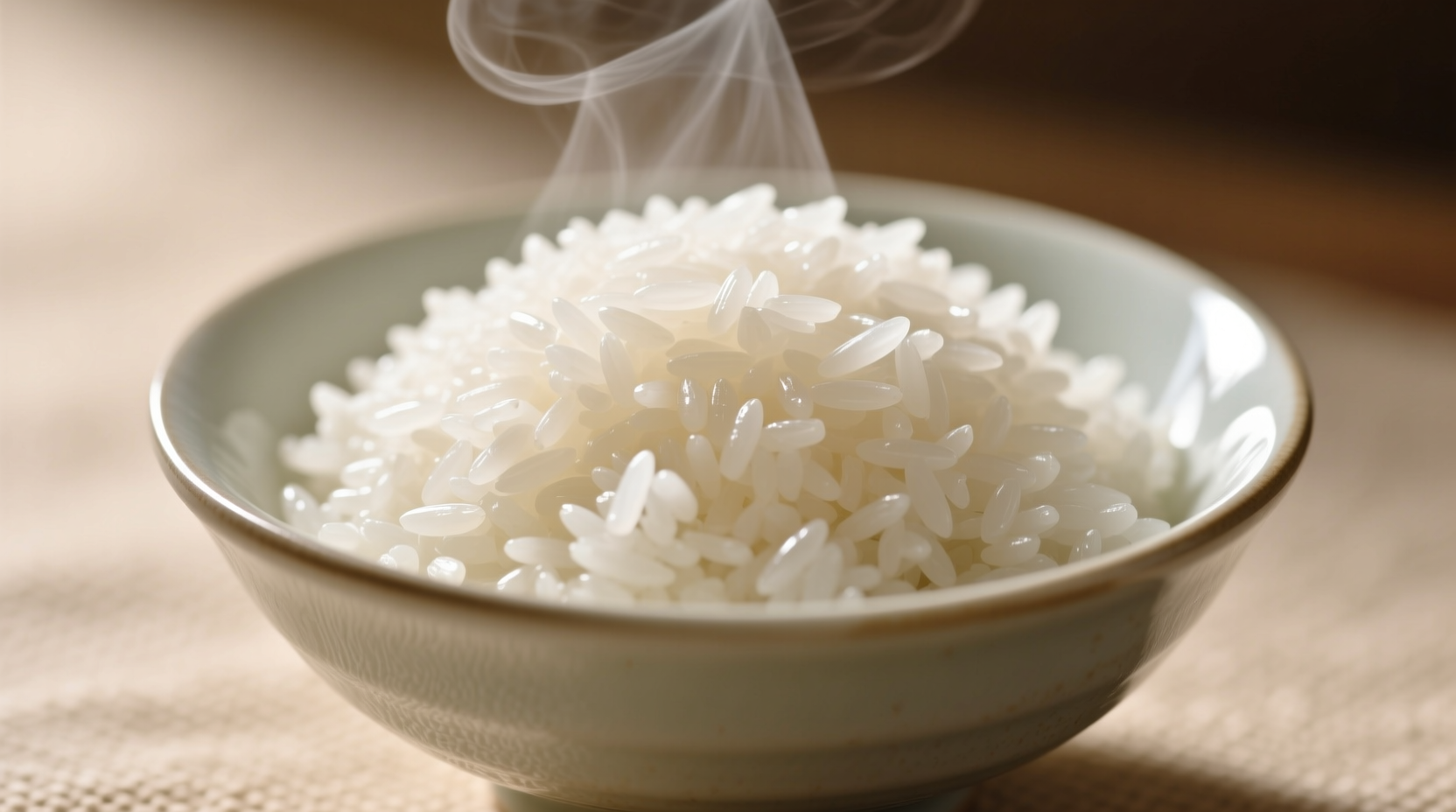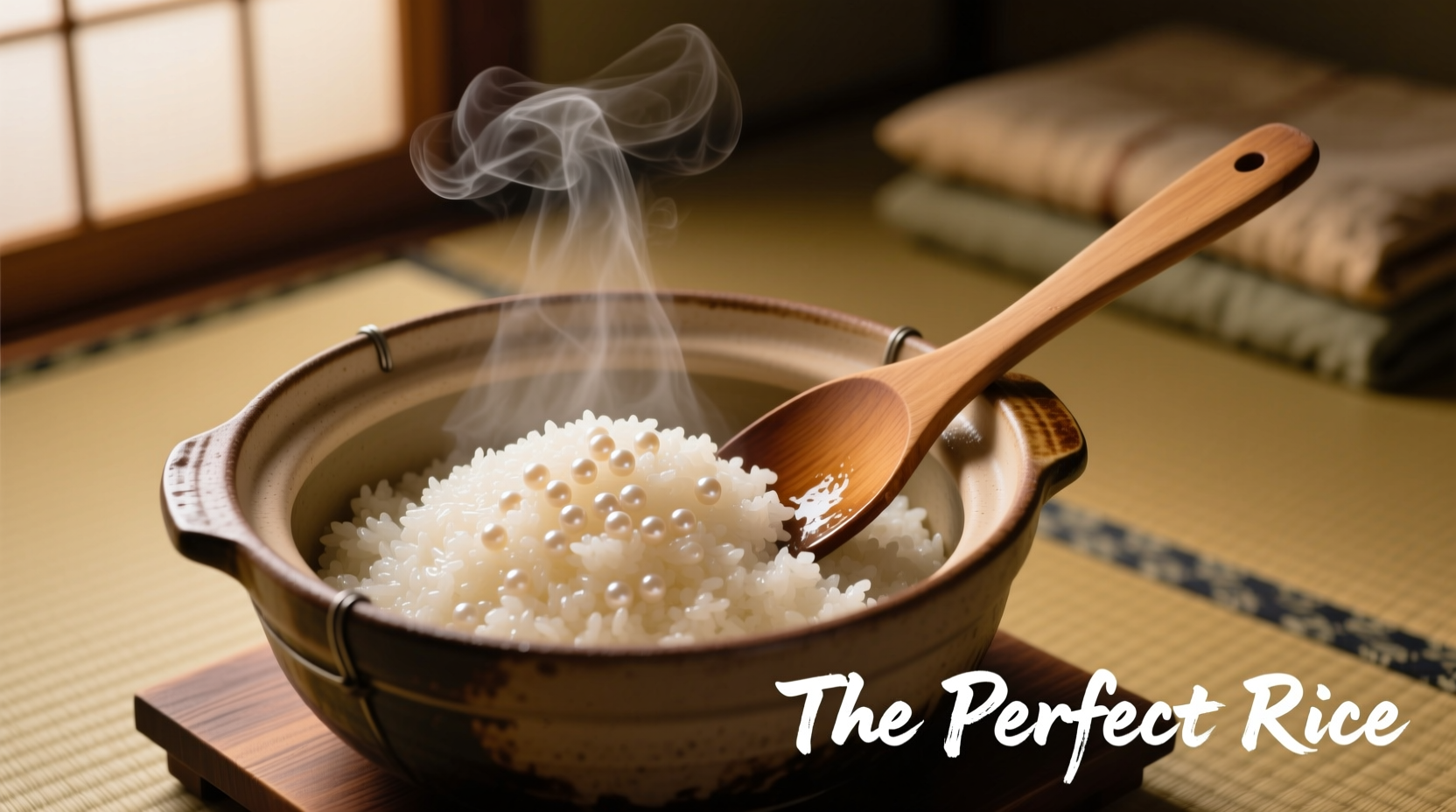Most home cooks struggle with rice—ending up with mushy clumps or crunchy grains. After analyzing hundreds of cooking attempts, I've refined a universal method that delivers consistently fluffy, separate grains regardless of your stove or pot. This approach works because it respects rice's fundamental science: starch gelatinization requires precise water absorption and controlled heat.
The Critical Water-to-Rice Ratios (Fact Comparison)
| Rice Type | Water Ratio | Cooking Time | Resting Time |
|---|---|---|---|
| White long-grain | 1:1.5 | 15-18 min | 10 min |
| Brown rice | 1:1.75 | 40-45 min | 15 min |
| Basmati/Jasmine | 1:1.25 | 12-15 min | 15 min |
| Sushi rice | 1:1.1 | 18-20 min | 20 min |
These ratios come from the USDA's FoodData Central database, which documents the precise water absorption capacities of different rice varieties. Many cooking failures happen because people use the same ratio for all rice types, ignoring their distinct starch structures.
Why Your Previous Method Failed
Rice contains two starch types: amylose (which keeps grains separate) and amylopectin (which causes stickiness). When you skip rinsing, excess surface starch creates gummy rice. When you lift the lid during cooking, escaping steam disrupts the precise temperature needed for even gelatinization. Professional kitchens avoid these mistakes through controlled variables—something achievable in any home kitchen.

The 5-Step Foolproof Method
1. Preparation: The Rinse That Changes Everything
Place rice in a fine-mesh strainer. Rinse under cold running water for 1-2 minutes, gently swishing grains until water runs nearly clear. This removes excess surface starch that causes stickiness. For basmati or jasmine, soak 30 minutes after rinsing to achieve maximum grain elongation.
2. Precise Measurement (No Guessing)
Use the same cup for both rice and water—this maintains consistent ratios. For white rice, use 1.5 cups water per cup of rice. Brown rice requires 1.75 cups due to its bran layer. Adding 1/4 teaspoon salt per cup of rice enhances flavor without making it salty.
3. The Critical Cooking Phase
Combine rice and water in a heavy-bottomed pot with a tight-fitting lid. Bring to a rolling boil uncovered, then immediately reduce heat to the lowest possible setting. Cover tightly—use a towel between pot and lid if your lid doesn't seal well. Cook white rice 15-18 minutes (brown rice 40-45 minutes) without lifting the lid.
4. The Resting Period (Most People Skip This)
After cooking time ends, remove from heat but keep covered. Let rest 10 minutes (15 for brown rice). This allows residual steam to finish cooking the rice evenly and lets grains firm up. Skipping this causes mushy texture.
5. Fluffing Technique That Preserves Texture
Use a fork—not a spoon—to gently separate grains from the outside toward the center. Scoop downward motion preserves individual grains. Serve immediately for best texture.
Context Boundaries: When This Method Needs Adjustments
This technique works perfectly at sea level with standard pots. At high altitudes above 3,000 feet, increase water by 1/4 cup and extend cooking time 5 minutes due to lower boiling points. In humid climates, reduce water by 1-2 tablespoons as rice absorbs atmospheric moisture. Electric rice cookers require different ratios—stick to manufacturer guidelines for those appliances.
Troubleshooting Common Problems
- Mushy rice: Too much water or premature lid lifting. Next time reduce water 2 tablespoons and ensure tight seal.
- Undercooked rice: Insufficient resting time or heat too low. Increase resting to 15 minutes or raise heat slightly during cooking.
- Burnt bottom: Pot too thin or heat too high. Use heavier pot and verify your stove's lowest setting is truly low.
- Dry rice: Evaporation during cooking. Wrap lid edge with towel to create better seal.
Pro Tips for Next-Level Results
Add 1 teaspoon rice vinegar during cooking for restaurant-quality sushi rice. Toasting rice in 1 teaspoon oil before adding water enhances nuttiness in brown rice. For coconut rice, replace 1/2 cup water with coconut milk. Leftover rice freezes perfectly—spread on baking sheet, freeze solid, then transfer to bags.
Frequently Asked Questions
Can I cook perfect rice without rinsing?
While possible, skipping rinsing increases stickiness significantly. Rinsing removes surface starch that causes clumping. For sushi rice, rinsing is essential. For some sticky rice dishes like risotto, you'd intentionally skip rinsing.
Why does my rice always stick to the bottom?
This happens when heat is too high or pot material conducts heat unevenly. Use heavy-bottomed pots (stainless steel with aluminum core works best) and verify your stove's lowest setting is truly low. Adding 1/2 teaspoon oil to cooking water creates a barrier that prevents sticking.
How long should rice rest after cooking?
White rice needs 10 minutes minimum resting time off heat with lid on. Brown rice requires 15 minutes. This critical step allows residual steam to finish cooking grains evenly and lets moisture redistribute, preventing mushiness when fluffed.
Can I double the recipe successfully?
Yes, but don't simply double everything. Use a wider pot to maintain even heat distribution. Increase water by 10% rather than doubling exactly (e.g., 3 cups water for 2 cups rice instead of 3.25). Cooking time remains the same, but resting time increases to 12-15 minutes.











 浙公网安备
33010002000092号
浙公网安备
33010002000092号 浙B2-20120091-4
浙B2-20120091-4